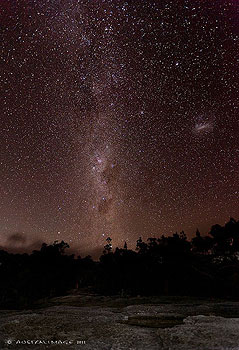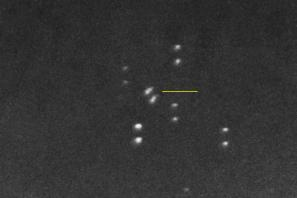|
|
|
Girraween National Park has a minor planet (asteroid) named after it.
15723 Girraween (1990 SA2) is a main-belt asteroid discovered on September 20, 1990 by Mr Tsutomu Seki at Geisei Observatory, Kochi, Japan.
Mr Seki is is a Japanese astronomer, internationally known as a comet observer and co-discoverer of the comet Ikeya-Seki. He has discovered 6 new comets and more than 200 minor planets (asteroids). A number of professional astronomers in Japan were inspired by his achievements when they were young stargazers.
The naming of minor planets can only be done by the International Astronomical Union - an international body of professional astronomers. Usually, only the discoverers of minor planets are allowed to propose names. Mr Tsutomu Seki kindly gave Eiji Kato of the Twinstar Guesthouse and Observatory the opportunity to suggest the name and he sent the proposal to the IAU following his suggestion.
|
|

|
|
Mr Kato, who lives in Ballandean, Australia, has known Mr Seki for some years. He has been translating Mr Seki's Japanese website into an English version, so that comet observers around the world can keep up with Mr Seki's latest discoveries. This is an ongoing project.
Mr Kato said the asteroid naming was "quite exciting" for stargazers and the region. "I suggested the name Girraween so the name of this magnificent park is preserved eternally in space."
Asteroid Girraween is a rocky body that is thought to be as large as 4.7km across. The determination of the exact size of an asteroid is almost impossible because there are a number of factors to be taken into account, some of which are unknown. The major factor is the reflectivity of the asteroid's surface. When two asteroids orbiting at the same distance are compared to each other, one may appear be brighter and bigger than the other. The brighter one is not necessariliy larger than the fainter one - it may actually be much smaller than the fainter one, but it can appear bigger if its surface reflectivity is much higher. Only a handful of asteroids have had their reflectivity fairly accurately determined and, unfortunately, Asteroid Girraween is not one of them.
Even at the point of its orbit where it comes closest to the earth, Asteroid Girraween would still be difficult to see through an 18 inch telescope and impossible to see with the naked eye. The asteroid is rather faint and it is always moving against a field of stars.
|

|
Discovery image of 15723 Girraween
September 20, 1990
60cm reflector f/3.5
Geisei Observatory, Kochi, Japan
|
This black-and-white discovery image of 15723 Girraween shows pairs of dots (stars). This is caused by a double exposure, usually taken several minutes apart. For the second exposure, the telescope is slightly shifted to create pairs of star images. As the stars are at fixed positions, they will all shift in the same direction. However, because asteroids move against the field of stars, the second image of an asteroid will shift in a different direction to those of the fixed stars. This is Mr Seki's method of discovering comets and asteroids.
|
The asteroid circles the sun once in every 3.4 years in an orbit that lies between Mars and Jupiter. You can see a simulation of its orbit on NASA's JPL Small-Body Database Browser.
Girraween isn't alone out there. It's one of a great many asteroids that circle the sun in what is known as the Main Asteroid Belt. These asteroids range in size from a dwarf planet 950 km in diameter (Ceres) down to objects the size of a dust particle.
So, when you next visit Girraween National Park, look up at the huge rocky mass of The Pyramid and picture Asteroid Girraween - itself many times larger than The Pyramid - orbiting majestically around the sun.
For More Information...
|
|

